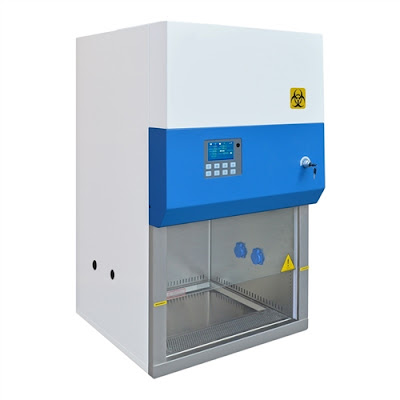In this article,
we explore the significance of ventilation systems in laboratories and delve
into the features and benefits of the Biological Safety Cabinets offered by Global Lab Supply. From
compliance with safety regulations to enhancing productivity, this
comprehensive overview highlights the importance of prioritizing proper
ventilation for a successful laboratory operation.
Introduction to Biological Safety Cabinets
Historical Evolution of Biological Safety Cabinets: The evolution of BSCs dates back to the 1940s when concerns about protecting laboratory workers from airborne pathogens arose. Over the years, advancements in technology and research have led to the development of more efficient and sophisticated BSC models.
Importance of Proper Ventilation in Labs
Prevention of Contamination and Cross-Contamination: Adequate ventilation plays a key role in preventing contamination of experiments and samples. It helps maintain a sterile environment by controlling airflow and minimizing the potential for cross-contamination between different materials.
Features and Benefits of Global Lab Supply's Biological Safety Cabinets
Ergonomic Design for User Comfort: In addition to advanced ventilation, Global Lab Supply's BSCs are designed with user comfort in mind. Ergonomic features such as adjustable heights, easy-to-use controls, and ample workspace contribute to a more pleasant and efficient working experience.
Compliance with Safety Regulations and Standards
Certifications and Quality Assurance: Global Lab Supply's BSCs undergo rigorous testing and certification processes to guarantee their performance and reliability. These quality assurance measures confirm that the cabinets meet industry standards and provide a secure working environment for laboratory personnel.
Enhancing Laboratory Efficiency and Productivity
Optimized
Workflow and Sample Protection
When your biological safety cabinet is properly
ventilated, it can enhance your lab's workflow by providing a clean and
controlled environment for handling samples. This not only protects your
samples from contamination but also ensures accurate results.
Noise
Reduction and Energy Efficiency
Proper ventilation not only keeps your lab safe
but can also reduce noise levels and improve energy efficiency. A
well-ventilated lab with a biological safety cabinet can create a more
comfortable working environment, leading to increased productivity among lab personnel.
Maintenance and Care Guidelines for Biological Safety Cabinets
Cleaning
Protocols and Best Practices
To ensure the optimal performance of your
biological safety cabinet, it's important to follow cleaning protocols and best
practices. Regular cleaning and disinfection can prevent cross-contamination
and maintain a sterile environment for handling sensitive samples.
Regular
Inspections and Calibration
Regular inspections and calibration of your
biological safety cabinet are essential to ensure that it continues to function
effectively. By conducting routine checks and calibrations, you can identify
and address any issues before they affect the safety and efficiency of your lab
operations.
Future Trends in Laboratory Ventilation
Technology
Stay ahead of the curve by exploring the latest
trends and innovations in laboratory ventilation technology. Discover how
emerging technologies are revolutionizing the way biological safety cabinets
are designed and operated, leading to safer and more efficient lab
environments.
Sustainability
and Green Practices
As the focus on sustainability grows, learn how
advancements in ventilation technology are promoting green practices within lab
settings. From energy-efficient designs to eco-friendly materials, see how the
future of biological safety cabinets is aligned with creating a more
sustainable and environmentally conscious laboratory ecosystem.
In conclusion, investing in high-quality Biological
Safety Cabinets with proper ventilation not only ensures the safety of
laboratory personnel and the integrity of research samples but also contributes
to overall efficiency and compliance with regulatory standards. Global Lab
Supply's advanced solutions exemplify the essential role of ventilation
technology in modern laboratory settings, emphasizing the importance of
prioritizing safety and innovation in scientific research. By understanding and
implementing best practices for ventilation and utilizing state-of-the-art
equipment, laboratories can create a conducive environment for groundbreaking
discoveries and advancements in various fields of study.







